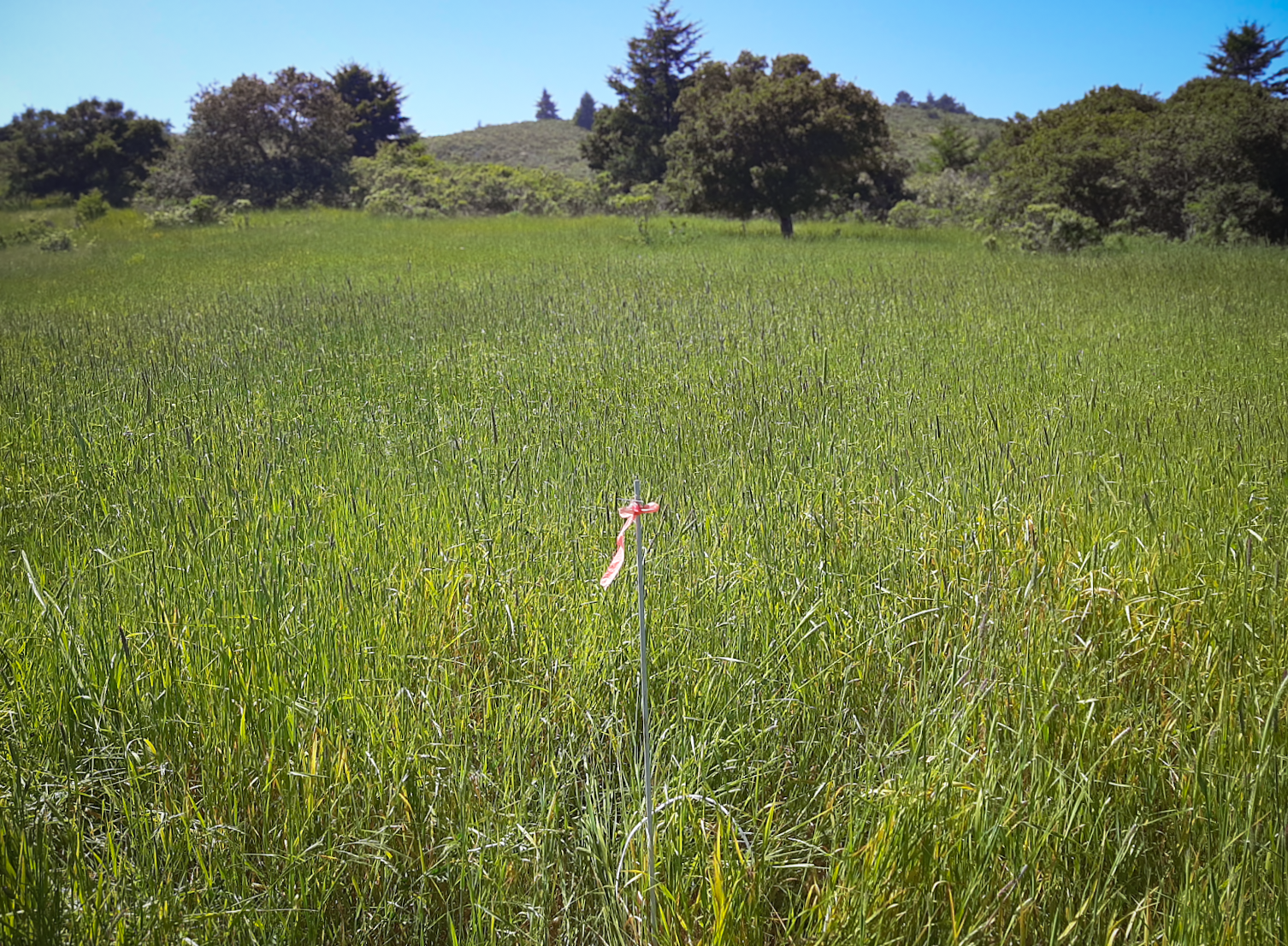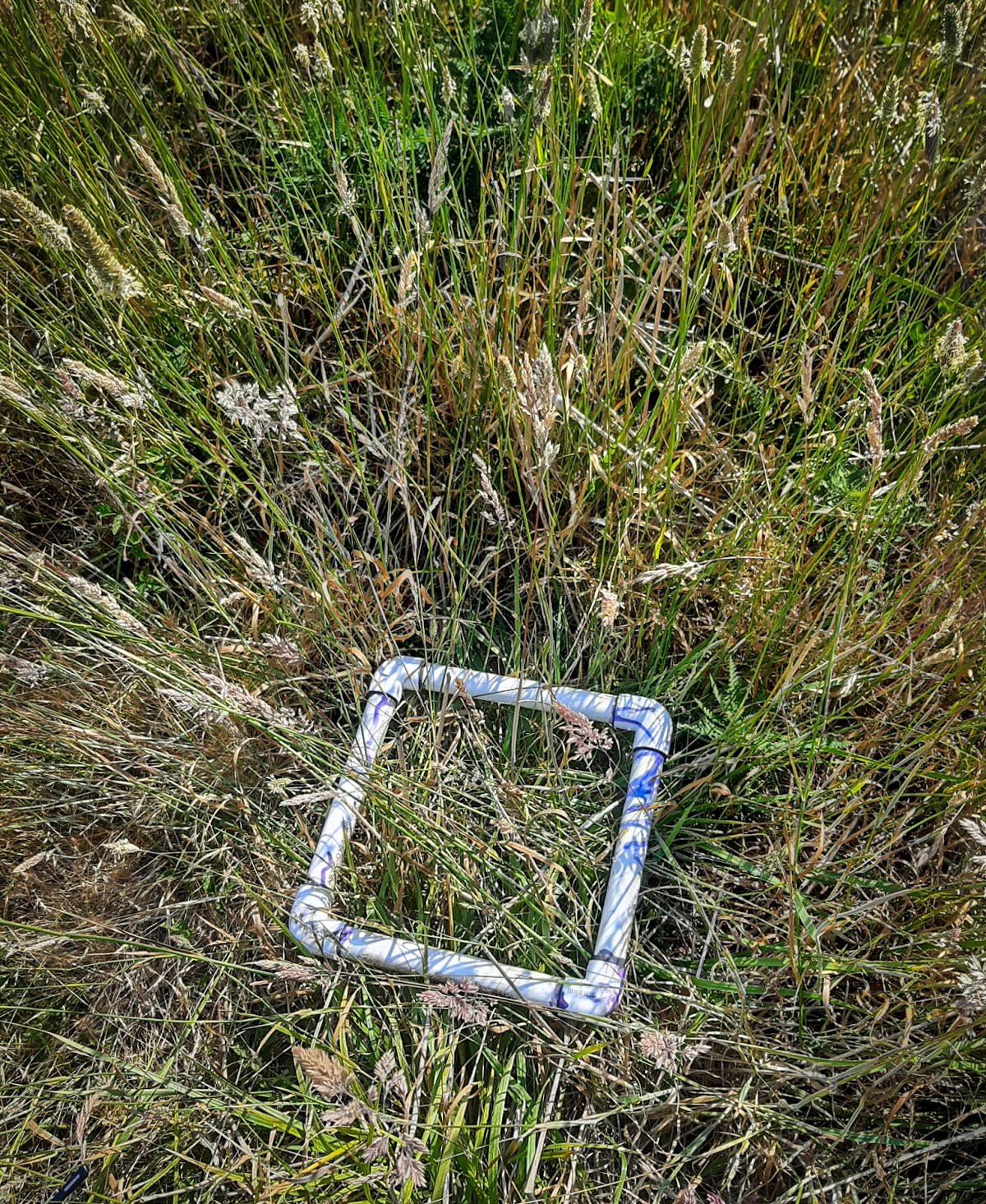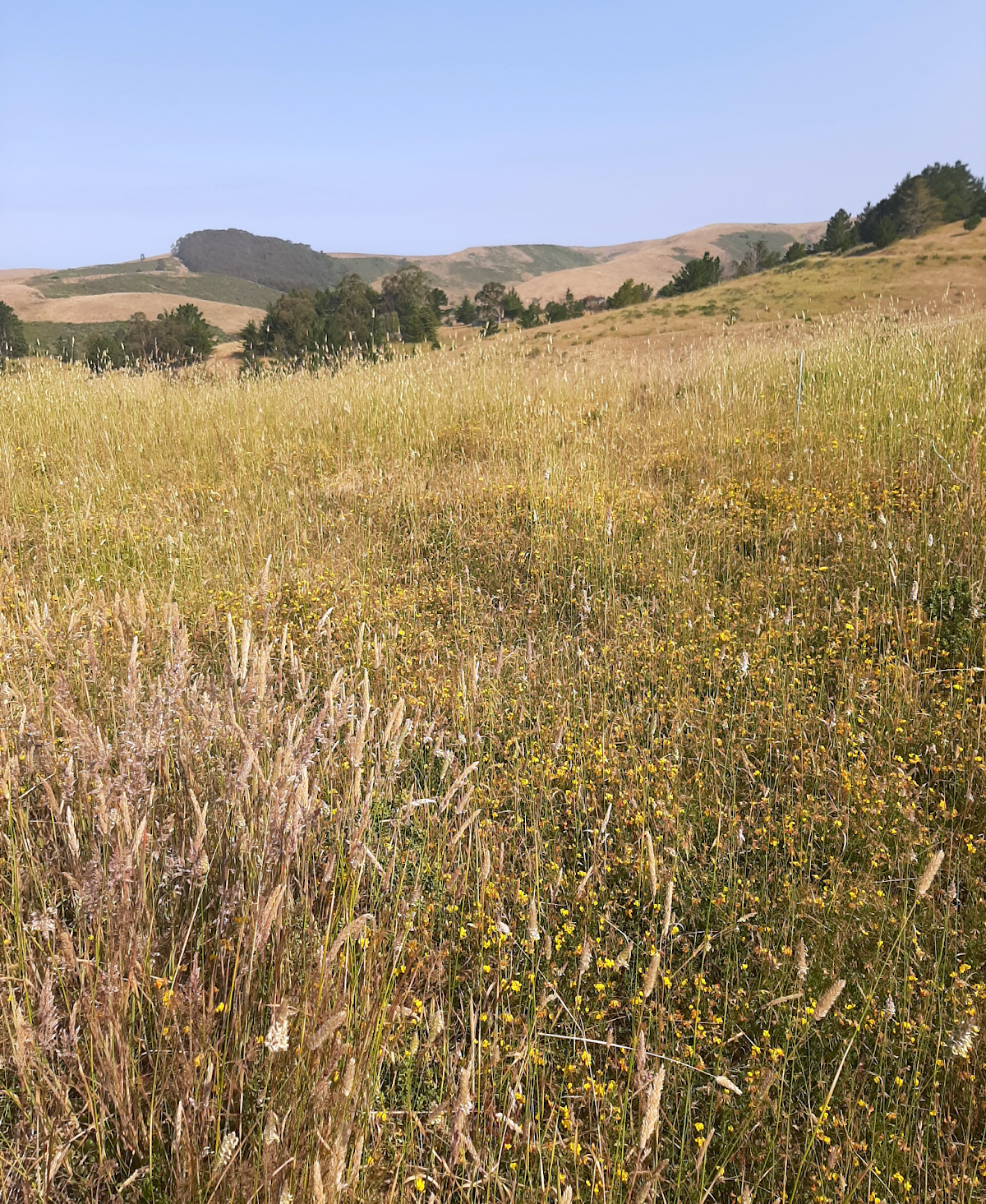At TomKat Ranch we manage Harding Grass. This grass is tricky. It, and its cousin (from the same genus), Reed Canary Grass (RCG), give ranchers all over the Western US a lot of trouble.
Making a “Natural Experiment” on the Ranch

A Patch of Harding Grass on an East Facing Slope
08/22/2024
By: Dakota Glueck
Photos by: Dakota Glueck
 At TomKat Ranch we manage Harding Grass. This grass is tricky. It, and its cousin (from the same genus), Reed Canary Grass (RCG), give ranchers all over the Western US a lot of trouble. Both are introduced perennial grasses that grow in soils that are compacted, or water-logged for part of the year. Their hollow roots allow them to transport oxygen into the soil, and thus, grow when other grasses cannot. This unique trait enables them to be phenomenally productive and they tend to out-compete other species as they grow in tall dense stands. Here’s the rub: when they get tall they become really rough and fibrous. Ranchers call them “rank,” at this stage and cattle find them unpalatable. Harding Grass in its rank state will shade out other plants, decrease biodiversity and create a monoculture.
At TomKat Ranch we manage Harding Grass. This grass is tricky. It, and its cousin (from the same genus), Reed Canary Grass (RCG), give ranchers all over the Western US a lot of trouble. Both are introduced perennial grasses that grow in soils that are compacted, or water-logged for part of the year. Their hollow roots allow them to transport oxygen into the soil, and thus, grow when other grasses cannot. This unique trait enables them to be phenomenally productive and they tend to out-compete other species as they grow in tall dense stands. Here’s the rub: when they get tall they become really rough and fibrous. Ranchers call them “rank,” at this stage and cattle find them unpalatable. Harding Grass in its rank state will shade out other plants, decrease biodiversity and create a monoculture.
This spring, the cattle team noticed that after two consecutive wet years the Harding Grass was spreading and becoming more abundant in some of the fields where we have added fertility (through a practice called bale grazing). While this abundance is great in the spring and late fall when Harding is palatable, its growth in new places might be a problem in the summer, when it goes rank.
The cattle team checked in with some other ranchers who had experience managing RCG grass. They learned of others who had successfully kept the grass tender longer by reducing the return interval of the cattle to around 30 days. When the livestock came back quickly the plant material did not have as much opportunity to mature into its unpalatable state.
From these experiences, we decided to look at the last year of gazing to see if we could observe a similar effect on TKR. The cattle team looked at our grazing records and identified 3 patches of Harding Grass that had each been grazed differently. These could be used as the basis of a natural experiment. Here’s what we found:
In one stand after the cattle grazed, the goats were allowed to graze the Harding within a much shorter recovery time than normal. Different species of livestock have different grazing habits and can utilize what the other leaves behind.
In a second stand, we grazed sections of the field differently. We grazed most of the stand in the winter but excluded an area that was too wet. About a month later, the cows grazed a small section for a few hours when we needed grass after vaccinating our calves. Thus, within a span of 60 days, we grazed one section twice, another section just once, and a final section not at all.

Our Quadrant
In the third stand, our bale graze trial, we selected an area to exclusively be grazed by the goats in order to understand their impact on another plant, the coyote brush. Here we could compare grazing by the cattle and the grazing by the goats.
We realized that these three stands of grass might have clues to help us better manage the Harding Grass. Our next goal was to figure out how to measure changes between each “treatment”. We settled on taking a few quantitative and qualitative measurements.
First we wanted to see if increased grazing led to increased biodiversity– a leading indicator of soil and land health and a great proxy for forage quality.
We chose the University of Oregon line point intercept protocol to take this measurement. We marked straight paths through the areas we wanted to measure. At each meter (over a 40 meter span), we randomly threw a marking flag to our right. At each flag location, we recorded every species of plant the flag touched from the top down, and the type of soil cover in that spot (living plant, decomposing litter, or bare ground). At every tenth site we took a larger sample, incorporating a 1ft2 quadrant. We randomly threw a 1×1 ft pvc pipe frame out to our right and estimated the relative abundance of each species in the square where it landed.

Bird's Foot Trefoil Coming Through the Grass
We also collected qualitative measurements through photography. In ranching, our on-board instruments—our eyes, ears, nose, fingertips—are often our most important tools. To document what we observed, we took photos during the line point intercept protocol, including aerial shots with our ranch drone. The photos convery the texture of the forage, how green and vegetative it was, and the density of the forage stand.
When all was said and done, we followed on foot and flew the drone along seven transects, covering three locations. Of these transects, three had not been grazed in the early spring, two had been grazed only once, and two had been grazed twice.
While some ranchers might have the time to ride the fields, many don’t have the time to specifically compare plots. Few, if any, have the resources to measure scientifically communicable data, and then follow that up with soil samples to track the effects of the different grazing practices on soil organic matter over a period of years. This is one of the many opportunities at TomKat Ranch that makes me excited. We are able to jump on opportunities to spend some time and take measurements in order to inform our management.
Our small cattle team still needs to find the time to input the data we collected and brush up on our ecological statistics skills (or more likely recruit our collaborators at Point Blue for some help!). Once we run the data we will have insights to help us manage Harding Grass better and can share these insights with other ranchers facing the same challenges. Look for our results in a future newsletter!